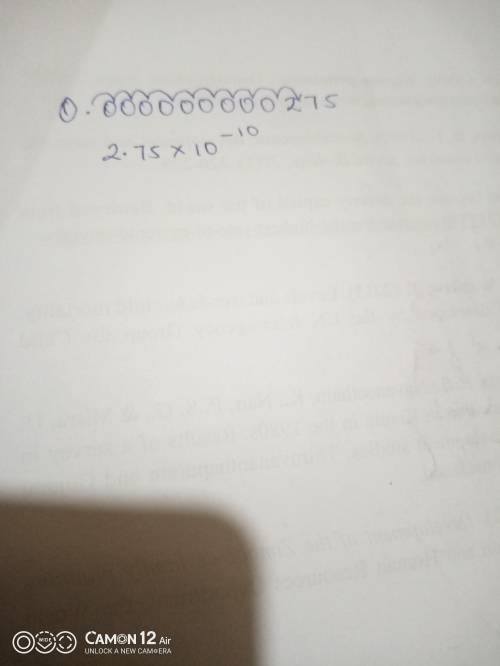
Physics, 04.06.2021 03:00 Questions138
The diameter of a watermolecule is 0.000000000275 m. How can this number best be expressed in scientific notation

Answers: 1


Another question on Physics

Physics, 21.06.2019 22:00
Air is held within a frictionless piston-cylinder container, which is oriented vertically. the mass of the piston is 0.45 kg and the cross-sectional area is 0.0030 m2. initially (state 1) the pressure of the gas is sufficient to support the weight of the piston as well as the force exerted by the atmospheric pressure ( 101.32 kpa). the volume occupied by the air within the cylinder in state 1 is 1.00 liter. one end of a spring (with spring constant k = 1000 n/m) is attached to the top of the piston, while the other end of the spring is attached to a stage that can move vertically. initially the spring is undeflected and therefore exerts no force. then the stage is then moved quasistatically downward a distance of 10.0 cm, at which point the system reaches state 2. the piston-cylinder is not insulated; rather it remains in diathermal contact with the surroundings, which are at a constant temperature of 300 k. what is the change of pressure within the container?
Answers: 3

Physics, 22.06.2019 15:30
What are the north and south poles of a solenoid change with?
Answers: 1

Physics, 22.06.2019 17:30
Asilver dollar is dropped from the top of a building that is 1324 feet tall. use the position function below for free-falling objects. s(t) = −16t2 + v0t + s0 (a) determine the position and velocity functions for the coin. s(t) = v(t) = (b) determine the average velocity on the interval [1, 2]. ft/s (c) find the instantaneous velocities when t = 1 second and t = 2 seconds. v(1) = ft/s v(2) = ft/s (d) find the time required for the coin to reach the ground level. (round your answer to three decimal places.) t = s (e) find the velocity of the coin at impact. (round your answer to three decimal places.) ft/s
Answers: 3

Physics, 22.06.2019 18:50
8.29 two streams containing pyridine and acetic acid at 25°c are mixed and fed into a heat exchanger. due to the heat-of-mixing effect, it is desired to reduce the temperature after mixing to 25°c using a stream of chilled ethylene glycol as indicated in the diagram. calculate the mass flow rate of ethylene glycol needed. the heat capacity of ethylene glycol at these conditions is approximately 2.8 kj/(kg k), and the enthalpy change of mixing (δmixh) is given below.
Answers: 3
You know the right answer?
The diameter of a watermolecule is 0.000000000275 m. How can this number best be expressed in scient...
Questions

English, 27.08.2021 17:00



Social Studies, 27.08.2021 17:00

Business, 27.08.2021 17:00

Chemistry, 27.08.2021 17:00


Mathematics, 27.08.2021 17:00



English, 27.08.2021 17:00

Mathematics, 27.08.2021 17:00



Chemistry, 27.08.2021 17:00

Social Studies, 27.08.2021 17:00

Mathematics, 27.08.2021 17:00



Health, 27.08.2021 17:00




